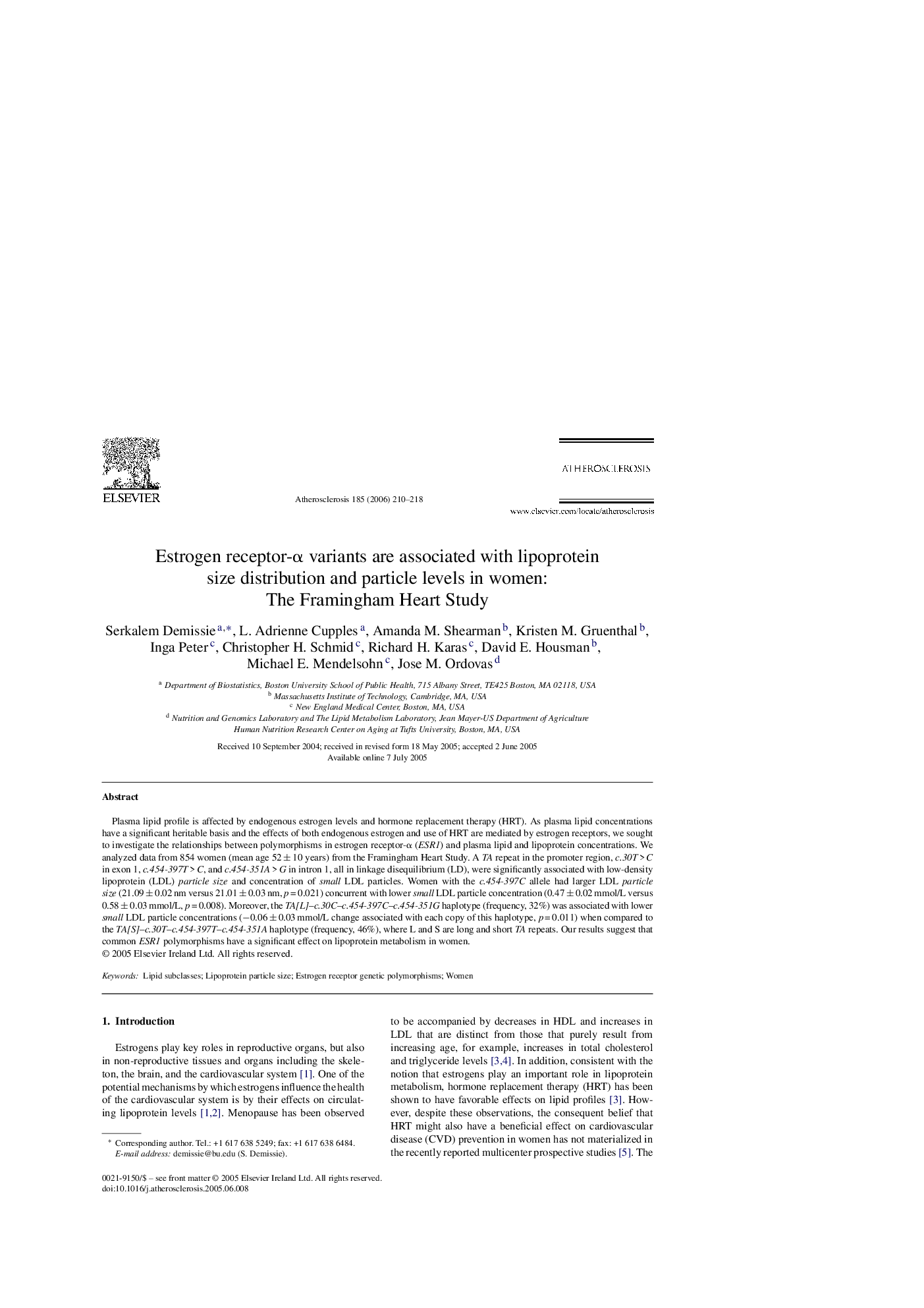| Article ID | Journal | Published Year | Pages | File Type |
|---|---|---|---|---|
| 2895421 | Atherosclerosis | 2006 | 9 Pages |
Plasma lipid profile is affected by endogenous estrogen levels and hormone replacement therapy (HRT). As plasma lipid concentrations have a significant heritable basis and the effects of both endogenous estrogen and use of HRT are mediated by estrogen receptors, we sought to investigate the relationships between polymorphisms in estrogen receptor-α (ESR1) and plasma lipid and lipoprotein concentrations. We analyzed data from 854 women (mean age 52 ± 10 years) from the Framingham Heart Study. A TA repeat in the promoter region, c.30T > C in exon 1, c.454-397T > C, and c.454-351A > G in intron 1, all in linkage disequilibrium (LD), were significantly associated with low-density lipoprotein (LDL) particle size and concentration of small LDL particles. Women with the c.454-397C allele had larger LDL particle size (21.09 ± 0.02 nm versus 21.01 ± 0.03 nm, p = 0.021) concurrent with lower small LDL particle concentration (0.47 ± 0.02 mmol/L versus 0.58 ± 0.03 mmol/L, p = 0.008). Moreover, the TA[L]–c.30C–c.454-397C–c.454-351G haplotype (frequency, 32%) was associated with lower small LDL particle concentrations (−0.06 ± 0.03 mmol/L change associated with each copy of this haplotype, p = 0.011) when compared to the TA[S]–c.30T–c.454-397T–c.454-351A haplotype (frequency, 46%), where L and S are long and short TA repeats. Our results suggest that common ESR1 polymorphisms have a significant effect on lipoprotein metabolism in women.
